10 Productivity Frameworks And Tools For Effective Management
Introduction
Productivity frameworks and tools are important for effective management and efficiency for both career professionals and entrepreneurs. They help create order and structure in our lives, and they can have a significant impact on our work performance and productivity. In this article, we explore the various productivity frameworks and tools that are available, and how they can help you manage your time and prioritize tasks more effectively. We will look at time management, prioritization, planning, productivity tools, communication tools, and productivity apps that can help you become more efficient in your work. By the end of this article, you should be able to find the right combination of tools and frameworks that is best suited for your needs.
Time Management Frameworks
Time management frameworks are essential for effective management and efficiency, as they provide a structured approach to understanding and achieving your goals. One of the most popular frameworks is the Eisenhower Matrix. This method is based on the idea that tasks can be divided into four categories: urgent and important, important but not urgent, urgent but not important, and neither urgent nor important. This allows you to easily determine which tasks you should prioritize and which tasks you should delegate or eliminate.
Another popular time management framework is the Pomodoro Technique. This method divides your work into 25-minute increments, otherwise known as “Pomodoro”. After a Pomodoro is completed, you take a brief break before starting the next one. This helps to increase focus and productivity. The ABC Method is also an effective time management technique. This method requires you to categorize tasks into three categories - A, B, and C - before prioritizing them accordingly. Tasks are the most important and should be completed first, while C tasks can be done last or eliminated altogether.
Prioritization Frameworks
When it comes to effective management, the ability to prioritize tasks is essential. Prioritization frameworks help us to break down tasks into manageable chunks, allowing us to focus on what’s most important and to complete tasks with greater efficiency. Here are a few popular frameworks that are useful for effective management and efficiency for both career professionals and entrepreneurs:
The Eisenhower Matrix is one of the most popular time management frameworks. It helps users to divide tasks into four categories based on urgency and importance. The Pomodoro Technique is another popular framework which encourages users to divide tasks into 25-minute chunks with frequent breaks in between. The ABC Method is a simple yet powerful tool for sorting tasks by priority.
The Urgent/Important Matrix is another great tool for prioritizing tasks. It helps you to identify which tasks need your immediate attention and which tasks can be delegated or postponed. The ABC Priority Method is a great way to categorize tasks based on their level of importance. Finally, the 4-D Method is an effective technique for determining the urgency and importance of tasks.
Planning Frameworks
Planning is an essential part of any successful endeavor, and having the right frameworks in place can help maximize efficiency and productivity. One of the most popular planning frameworks is the Getting Things Done (GTD) Method, developed by productivity expert David Allen. The GTD method is based on the idea of creating a system that allows you to effectively capture, organize, and process tasks. This includes creating actionable lists, breaking tasks into smaller steps, and scheduling deadlines.
Another widely used framework is the RACI Model. This acronym stands for "responsible, accountable, consulted, and informed," and it is used to define roles and responsibilities within a project team. This ensures that everyone is clear on what their role is and what they need to do to contribute to the success of the project.
The final planning framework that is essential to effective management and efficiency is the SWOT analysis. This stands for strengths, weaknesses, opportunities, and threats, and it is used to identify and analyze a company's competitive environment. By assessing the current situation, companies can maximize their strengths, minimize their weaknesses, take advantage of opportunities, and mitigate any potential threats.
Productivity Tools
Productivity tools are essential for effective management and efficiency. They help to organize tasks, prioritize important projects, and track progress. Trello is a collaboration tool that enables users to create boards and lists, assign tasks, and manage project timelines. Asana is another productivity tool that helps to keep track of projects and tasks. It also allows users to create and assign tasks to team members. Todoist is a task management tool that enables users to create and organize tasks and reminders.
Communication tools are also useful for effective management and efficiency. Slack is a popular communication tool for teams that enables users to create conversations, share files, and communicate with team members. Microsoft Teams is another collaboration tool that helps teams stay in touch and collaborate. Skype is a popular video chat tool that enables users to make video calls and share files.
Productivity apps can also be helpful for effective management and efficiency. Evernote is a popular note-taking app that helps users capture ideas, organize notes, and store content. Forest app is an app that helps users stay focused by planting virtual trees, and RescueTime tracks time spent on different apps and websites to help manage productivity.
Communication Tools
The ability to communicate effectively is essential for effective management and efficiency. It is important to have the right communication tools in place to facilitate efficient collaboration, feedback, and communication.
Slack is a popular messaging platform for teams. It enables users to quickly and easily chat in real-time, and create channels for different topics and tasks. Microsoft Teams is another messaging platform that provides a suite of office tools that enable collaboration. Skype is a well-known video and voice call platform that helps people stay connected with their colleagues. These communication tools can help to make communication and collaboration smoother, and help to ensure that tasks are completed efficiently.
Productivity Apps
Productivity apps are one of the most useful tools for effective management and efficiency. They provide users with the capability to track their tasks, goals, and progress. Apps like Evernote, Forest app, and RescueTime allow users to organize their tasks and prioritize them, track progress, and get a better understanding of how long it takes to complete a task. These apps can be used to block off specific times for work, as well as to track the completion of tasks and progress made. Additionally, these apps help users stay on task and focused on their goals and objectives. Evernote allows users to take and store notes, keep track of tasks, and collaborate with others. Forest App encourages users to stay focused by planting a tree every time they stay away from their phone for a certain period of time. RescueTime tracks user's time usage, provides detailed reports, and gives users insights on their productivity.
Conclusion
Productivity frameworks and tools are essential for effective management and efficiency in both career professionals and entrepreneurs. While it is important to explore and find which productivity frameworks and tools are best suited to an individual's needs, it is also important to stay up-to-date with the latest advancements in the productivity world. By taking the time to learn and implement these frameworks and tools, we can help create a more productive and efficient work environment. With the right combination of productivity tools and frameworks, we can help create a more efficient and organized lifestyle.

